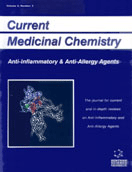Abstract
This article reviews the peripheral benzodiazepine receptor (PBR) and its involvement in inflammatory responses. Diazepam interacts with two distinct receptors. The first one, known as the central-type benzodiazepine receptor (CBR), is associated with the GABA-regulated chloride channel and located in the central nervous system. The second is the peripheral benzodiazepine receptor (PBR) that is found in central as well as various peripheral tissues and that displays pharmacological characteristics distinct from the central type. Indeed, isoquinoline derivatives of carboxamide, such as PK11195, which are high affinity ligands for the PBR, do not bind to the CBR. Diazepam binds PBR and CBR with the same nanomolar affinity, but the 4-chloro derivative of diazepam, Ro5-4864, binds only the PBR with high affinity. Other benzodiazepines, such as clonazepam and flumazenil, recognise specifically the CBR. The PBR is found on various types of blood cells, mainly monocytes and polymorphonuclear cells (PMN), and PBR ligands modulate monocyte functions, such as chemotaxis, respiratory burst and cytokine secretion. PK11195 and Ro5-4864 strongly inhibit mouse paw oedema formation by carrageenan, exert an inhibitory effect on neutrophil influx and cause a marked reduction in carrageenanstimulated interleukin-13 and interleukin-6 in pleural exudate. PK11195, Ro5-4864 and the recently described, selective PBR ligand, SSR180575 prevent destruction in the joints and limit progression over the articular surface in a model of rheumatoid arthritis. Peripheral benzodiazepine receptor ligands might be of pharmacological interest as potential anti-inflammatory agents.
Keywords: Benzodiazepine, carboxamide, interleukin-6
 6
6

